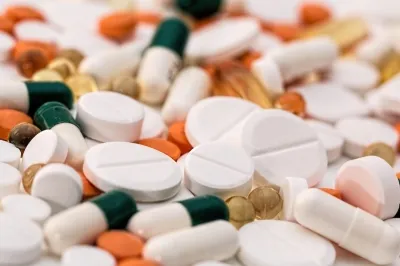How Did Electronics and Pharma Sectors Capture 70% of PLI Funds in FY25?

Synopsis
Key Takeaways
- Electronics and pharma sectors received 70% of PLI funds.
- Electronics exports grew by 32.46% in FY25.
- Pharmaceutical exports reached $30.5 billion.
- Computer hardware exports doubled in FY25.
- PLI scheme enhances India's manufacturing capabilities.
New Delhi, July 13 (NationPress) The electronics and pharmaceutical industries have emerged as the primary beneficiaries of the government’s production-linked incentive (PLI) scheme for the fiscal year 2024-25, capturing nearly 70 percent of the total funds allocated, based on official statistics.
Out of a total of Rs 10,114 crore disbursed under the scheme during this period, the electronics sector was allocated Rs 5,732 crore, while the pharma sector received Rs 2,328 crore, as indicated by the data.
Initiated in 2021 to enhance domestic manufacturing, the PLI scheme was originally designed for 14 key sectors.
Since its inception, it has significantly contributed to fortifying India’s industrial framework and promoting increased value-added exports.
The effectiveness of the scheme is evident in the remarkable growth of the electronics sector.
Thanks to a robust manufacturing drive, electronics have secured a position among India’s top three export categories.
The sector achieved an astonishing export growth of 32.46 percent in 2024-25, with exports climbing from $29.12 billion in 2023-24 to $38.58 billion in the preceding fiscal year.
This marks a significant increase from $15.7 billion in 2021-22 and $23.6 billion in 2022-23, according to government data.
A standout feature within the electronics category was computer hardware and peripherals, which experienced an impressive 101 percent increase, with exports doubling from $0.7 billion to $1.4 billion in FY25.
The top markets for Indian electronic products included the United Arab Emirates, United States, Netherlands, United Kingdom, and Italy.
The pharmaceutical sector also demonstrated resilience, with Indian medicines and drugs reaching over 200 countries.
In 2024-25, pharma exports surged by nearly 10 percent to reach $30.5 billion—a testament to the country’s growing global footprint in healthcare and pharmaceuticals.
The latest data underscores the expanding influence of the PLI scheme in propelling India's manufacturing and export goals, particularly in sectors where the nation is emerging as a global frontrunner.








